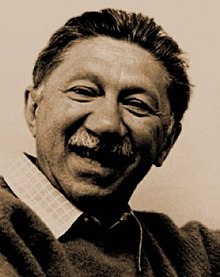Humanism
Learning is crucial for all people to find fulfillment in their personal life, professional life and their life as a member of their greater communities. However, how do people learn? One thing we have clarified early on in EDU 630 is that people learn differently. Chapter two of Adult Learning by Merriam and Bierema discusses traditional learning theories. The chapter defines five different theories to assess learning. The five theories are: Behaviorism, Humanism, Cognitivism, Social Cognitive Theory and Constructivism. For the purpose of this blog post I will focus on Humanism as defined by Maslow, not Rogers. |
| Psychologist Abraham Maslow |
Abraham Maslow
Abraham Maslow is one of two humanistic psychologists mentioned in Adult Learning for contributions to humanism; Carl Rogers being the other. Maslow's research on humanism is founded on the idea that people have growth potential and have free will to make choices, which is in contract to behaviorism - the idea that learning is identified by a change in behavior when people are presented with stimuli (Merriam & Bierema, p. 29). Maslow reveals his theory through a triangle known as Maslow's Hierarchy of Needs.Hierarchy of Needs
The Maslow's Hierarchy of Needs triangle categorizes needs of people with the ultimate idea that every person can reach a level of potential known as self-actualization through different levels of motivation (Merriam & Bierema, p. 30). This triangle has five (5) levels that build on one another once the prior 'need' is met. The triangle begins with physiological needs and then progresses to safety needs, then emotional needs, then esteem needs, and, lastly, self-actualization. These levels all represent different needs, according to Maslow, that humans must meet before they can begin to worry about needs further up the triangle. The video below provides an insightful overview of Maslow's theory on humanism:
As an administrator and manager this theory of needs and motivation truly interests me. As this theory reveals that people cannot begin to focus on emotional needs, esteem needs and self-actualization. These levels are where the workplace truly start to become evident. So, as a manager, it is important to know that employees cannot begin to delve into their duties and career until their basic physiological and safety needs are met. Once these are met, though, employees can begin to evolve and grow as a person.
Maslow's Research Expanded
Maslow's research has been around since the 1950s. The research he developed has laid the groundwork for further research and expansion. The updated Hierarchy of Needs is very similar to Maslow's initial research. The update contains physiological, safety, and esteem needs, and it contains self-actualization. However, the new chart adds four new needs and removes/replaces emotional needs. The chart below shows the updated order and additions to the hierarchy.

This chart discusses the eight levels of needs or motivations in two degrees: coping needs and growth needs. Now even though the new chart includes social needs, cognitive needs, aesthetic needs and transcendence, the framework of this research remains the same as Maslow's: people have a pyramid of potential that they CAN meet if they are given the tools to satisfy their prerequisite needs within Maslow's hierarchy.
This topic could occupy a chapter all its own in any book regarding learning. As a manager though, I find this chart extremely helpful and insightful! The idea that someone cannot focus on work because they are hungry, thirsty or sick is something that most take for granted. We understand that people cannot focus on work when all they can think about is lunch, but we do not always understand that other needs exist in every person and that these needs must also be met to help them reach their potential. My hope is that my blog post is just a brief introduction to Maslow's research and that everyone looks deeper into this subject as it has remained relevant since the 1950s.
References:
Abraham Maslow Picture
Overview of Maslow's Hierarchy of Needs
Expanded Hierarchy
Merriam, S. B., & Bierema, L. L. (2014). Adult learning: Linking theory and practice. San Francisco, CA: Jossey-Bass.
No comments:
Post a Comment